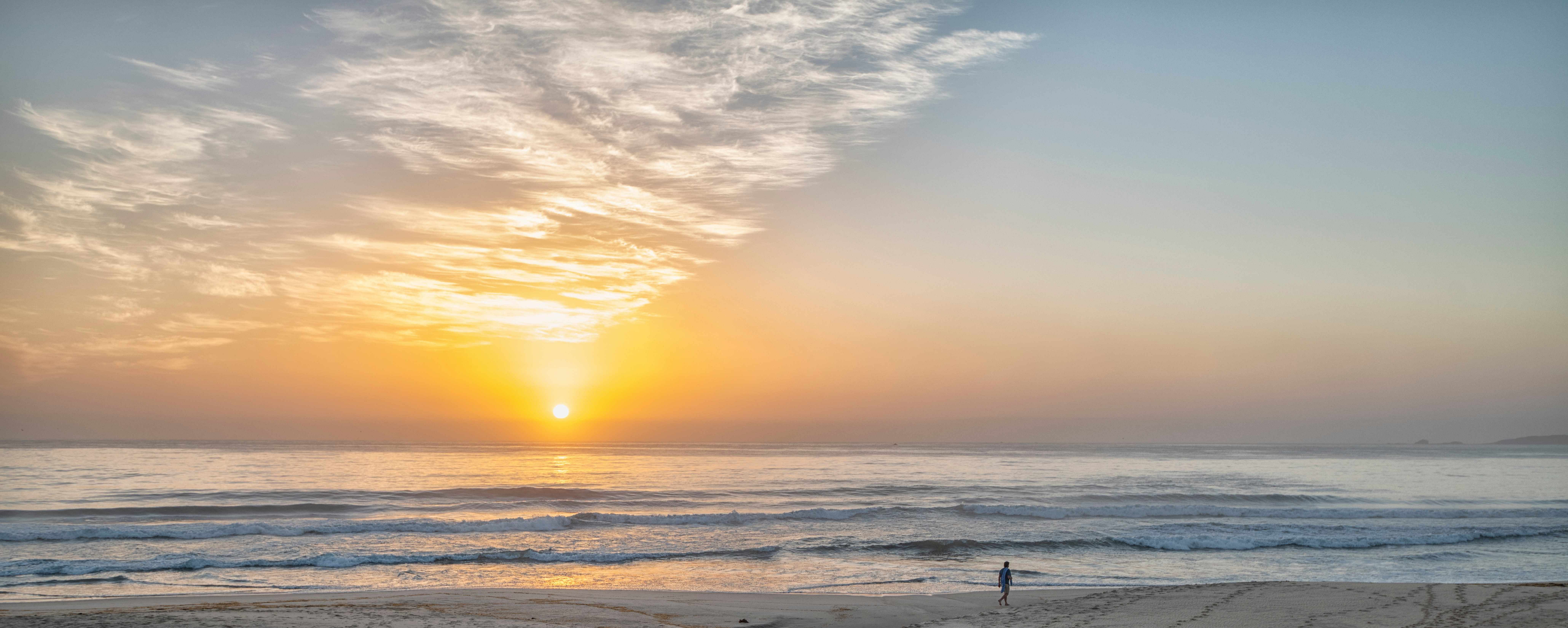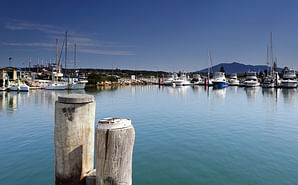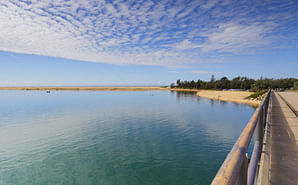Ocean outfall study results delivered
The results of a 10-year study into the potential impacts of developing an ocean outfall pipe at Merimbula Bay are in.

25 August 2021
The results of a 10-year study into the potential impacts of developing an ocean outfall pipe at Merimbula Bay are in.
A comprehensive Environmental Impact Statement has been independently reviewed by the NSW Department of Planning, Industry and Environment and is ready for the next round of community feedback.
Council’s Water and Sewerage Services Manager, Chris Best said the study marks a key milestone in a project that aims to improve effluent quality and disperse what cannot be reused further out to sea.
“This project came from a need to improve on ageing infrastructure that no longer meets regulatory requirements or community expectations,” Mr Best said.
“Put simply, since the 1990s, we have been using exfiltration ponds in culturally and environmentally sensitive sand dunes, and an outfall pipe that empties onto one of the region’s most treasured beaches.
“State of the art processes at our Merimbula treatment plant have made this workable to an extent, with regular testing showing good water quality in Merimbula Bay.
“However, our shire is growing, greater pressures are being put on our treatment plants, and technology now allows us to make good quality effluent even better.
“If we add to this the need to protect valuable sand dune environments and the imperative that we must stop using culturally significant land as a filter for our effluent, then we reach a point where things must be done differently.
“This is why we have been working on finding a solution for more than 10 years. With a pristine bay, visitor expectations, a local shellfish industry and cultural heritage at stake, we must get this right.
“In this Environmental Impact Statement, we have left no stone unturned, looking at how the construction and ongoing operation of a 2.7km outfall pipe may affect local environments, recreation and business.
“We also provide a realistic view of effluent re-use, something we are keen to increase beyond current levels without removing the need for a safer backup disposal system.
“The EIS is a big report, and it needs to be, and we recommend anyone with an interest in this project and their local coastal environment to make the most of the depth of research that has gone into this document.
“The report has been independently reviewed by experts at the NSW Department of Planning, Industry and Environment, and it is now ready for community feedback.
“Any feedback will be collected by the NSW Government. All comments will be considered and any changes to the EIS will be incorporated before a ministerial determination is made. Your voice counts – and now is your chance to tell the NSW Government what you think.”
To read a summary of the Environmental Impact Statement’s findings, the full report and a link to the NSW Government’s submissions portal, visit Council’s Have Your Say webpage.
Making an enquiry
All media enquiries and interview requests are coordinated by Council's Communication and Engagement team under the adopted Communications Policy. To view this policy, visit Public Policies and search 'communications'.
To submit a media enquiry or to request an interview:
- email media@begavalley.nsw.gov.au
- call 02 6499 2222
Councillors
Councillors can be contacted directly for enquiries regarding decisions of the elected Council and non-operational matters. Interviews with the Mayor should be arranged through the Communication and Engagement team contact details above.
Receiving information
If you’re a journalist or media organisation that would like to receive media releases and notifications about media opportunities, please email your name, title and contact details to media@begavalley.nsw.gov.au and we will add you to our distribution list.
You can also subscribe to Bega Valley Together and Business News, Council's fortnightly e-newsletters, or follow @begavalleyshirecouncil on Facebook and Instagram.






